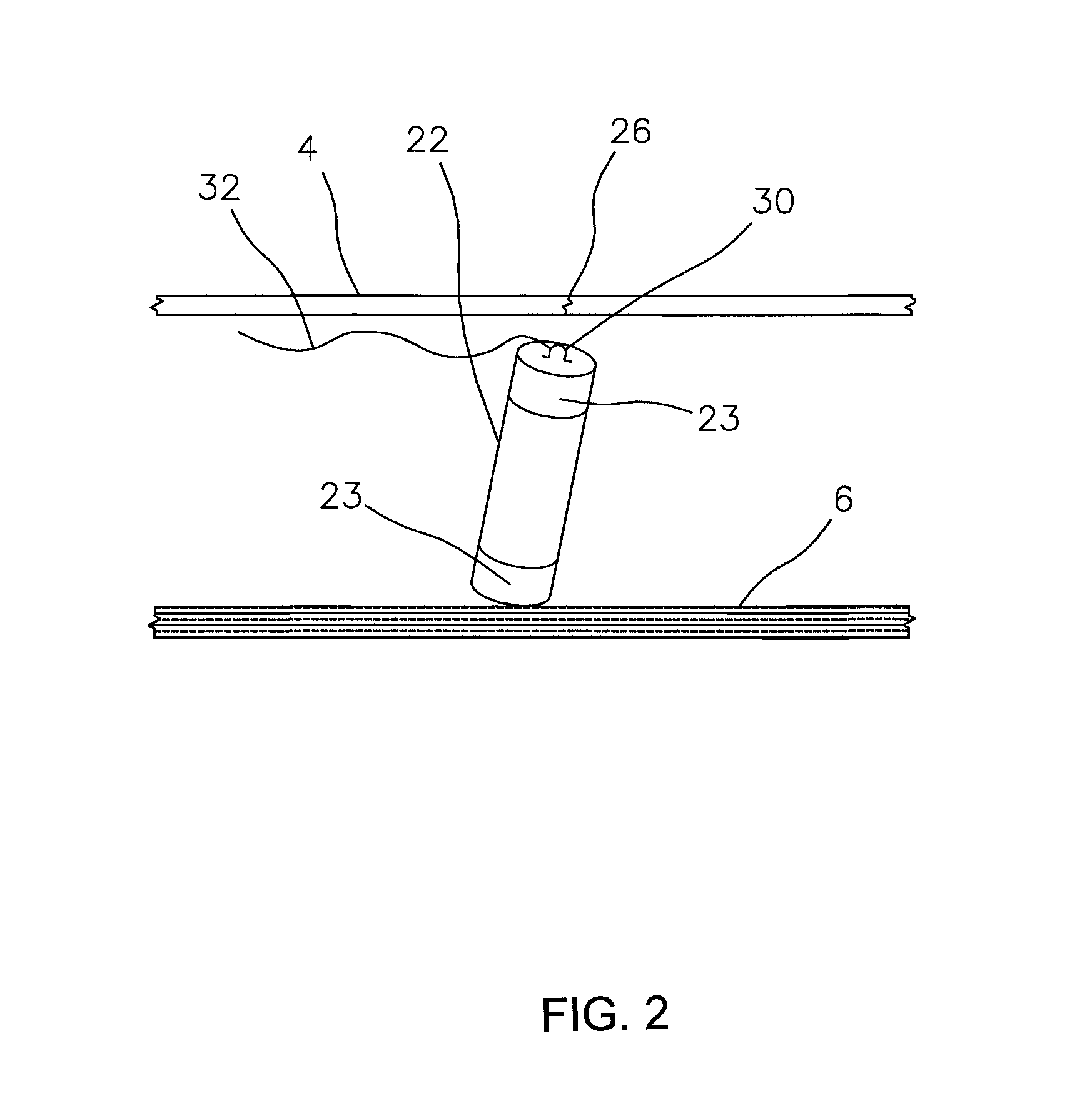Method for removing surgically implanted devices
a technology of surgical implants and implants, which is applied in the field of surgical implant removal methods, can solve the problems of imposing risk, discomfort and potential tissue damage on the patient, and achieve the effects of reducing the risk of infection, and improving the safety of patients
- Summary
- Abstract
- Description
- Claims
- Application Information
AI Technical Summary
Benefits of technology
Problems solved by technology
Method used
Image
Examples
Embodiment Construction
A microstimulator 22 (see FIG. 2) is represented by a small tubular device that contains an electronic package and communication means for modifying or affecting a body parameter when it is located near a nerve 6 or muscle to be stimulated. The nerve 6 is a specific targeted beneficial nerve that is selected because it controls a specific desired muscular function. In a preferred embodiment, the microstimulator 22 has microstimulator electrodes 23 located on each end.
FIG. 1 illustrates the microstimulator 22 being inserted into the outer sheath 16 using the blunt-end push rod 24. Alternately, the microstimulator can be inserted into the outer sheath 16 by using the electrode probe 2 or inner sheath 8. The blunt-end push rod 24 has a location mark 28 that circumscribes the push rod 24 such that the location of the microstimulator 22 in the outer sheath 16 can be ascertained by reference to the location mark 28.
Once the microstimulator 22 is placed in close communication with the nerv...
PUM
 Login to View More
Login to View More Abstract
Description
Claims
Application Information
 Login to View More
Login to View More - R&D
- Intellectual Property
- Life Sciences
- Materials
- Tech Scout
- Unparalleled Data Quality
- Higher Quality Content
- 60% Fewer Hallucinations
Browse by: Latest US Patents, China's latest patents, Technical Efficacy Thesaurus, Application Domain, Technology Topic, Popular Technical Reports.
© 2025 PatSnap. All rights reserved.Legal|Privacy policy|Modern Slavery Act Transparency Statement|Sitemap|About US| Contact US: help@patsnap.com



